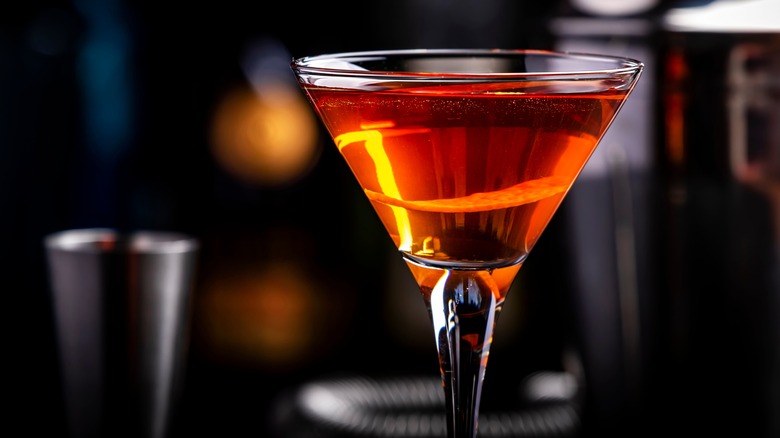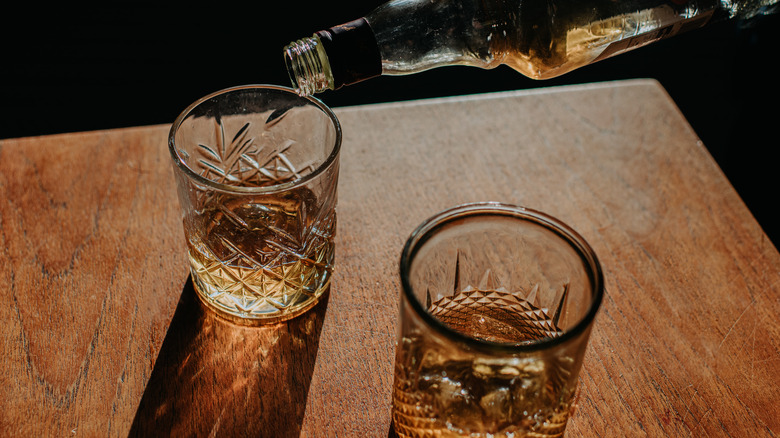The Key Spirit You Need To Mix A Bobby Burns Cocktail
Whiskey lovers looking for a new recipe to spruce up their repertoire should give the Bobby Burns a try. This easy-to-make classic cocktail requires only a few ingredients: sweet vermouth, Benedictine, and a lemon peel garnish. And, the key spirit you need to mix a Bobby Burns cocktail? An aged blended scotch whisky. The Bobby Burns harkens back to the drinking days of yesteryear. The recipe first appeared as the Baby Burns in "Bishop & Babcock Company's Fancy Drinks," published in 1902. Like its classic cousin, the Rusty Nail, the Bobby Burns calls specifically for blended scotch.
Blended scotch comes in many varieties that typically taste of vanilla, dried fruit, leather, or chocolate. The herbal notes of citrus and cocoa in the sweet vermouth highlight the scotch without stealing the show. The sweet honey flavor and holiday spices of the Benedictine liqueur further complement the scotch, while lemon peel adds a refreshing twist.
Irish whiskey tends to taste lighter and may not measure up to the boldness of a blended scotch. Bourbon, made from corn, has a sweeter finish that would overwhelm a drink that already contains sweet vermouth. Although subtle, these details matter when creating a perfectly balanced cocktail.
Blended vs single malt scotch whisky
Scotch whisky comes from Scotland and has two distinct styles: single malt and blended. Each must follow strict requirements to qualify as such according to regulations. A single malt scotch must be made from fermented malted barley and aged in a barrel for at least three years. Blended scotch can be crafted from a blend of fermented grains, hence the name. Typically, a blended scotch whisky combines cereal grains, such as corn or wheat, with malted barley.
Whether single malt or blended, each bottle of scotch will have its own unique complexity. Both scotch whiskies start out the same. Grain is fermented and distilled. But, the grain used, the region it's made, the climate, distillation techniques, and the aging process all create a particular personality.
Generally, a single malt has a sweet earthiness and more of a dry finish than its blended counterpart. Single malts tend to have more regional traits, too. Scotch from Islay tastes peaty and woody. Delicate and floral notes come through in single malts from the lowlands. These nuances make it preferable to sip straight up or on the rocks, with minimal ingredients to overpower its complexities. Typically not as bold in flavor compared to a single malt, blended scotch has more consistency and subtlety. Its smooth finish and approachability make blended scotch ideal for cocktails, such as the Bobby Burns.


